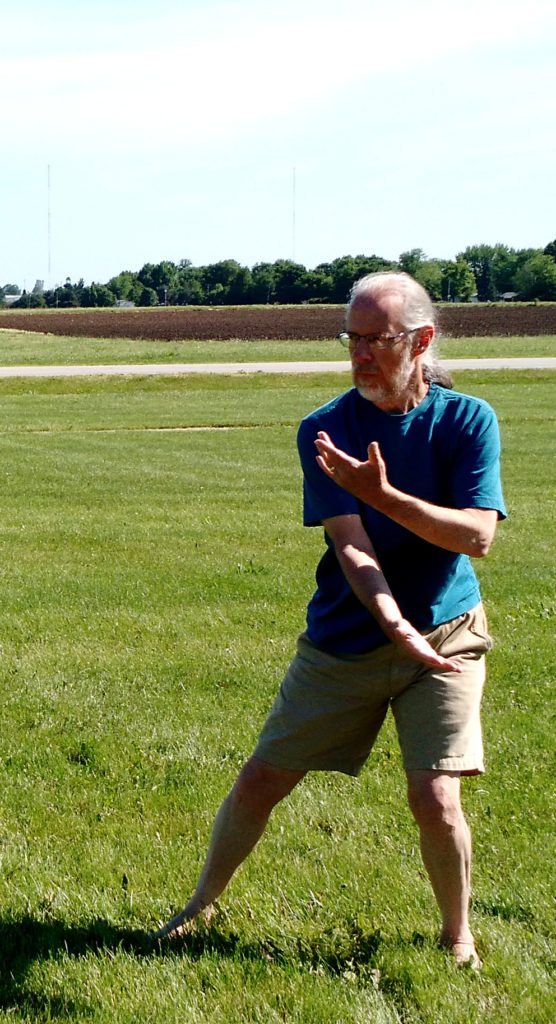I started practicing tai chi in 2009 with a beginner course at OLLI (the OSHER Lifelong Learning Institute). I’d always been attracted to tai chi. I liked the way it looked—the slow, controlled movement. I was also interested in it as a martial art, and I liked the idea of “moving meditation.” Despite all that interest, I had not anticipated how transformative the practice would turn out to be.

Before I added the tai chi practice to my life, I was all about figuring out the “right” amount of exercise—and in particular, the minimum amount of running, lifting, walking, bicycling, stretching, etc. to become and remain fit enough to be healthy, comfortable, and capable of doing the things I wanted to be able to do.
Pretty quickly after I took up the practice, I found I was no longer worried about that. I found that my body actually knew what the right amount was, and that all I needed to do was move when I felt like moving—and make sure that my movement was diverse.
Because diversity was the key, I did a lot more than just tai chi. I continued running. I dabbled in parkour. I stepped up my lifting practice (and then shifted to mostly bodyweight training when the pandemic made gyms unavailable, and then continued with it because it seemed to work better). I went down a “natural movement” rabbit hole. I walked a lot.
In about 2012 or 2013 my tai chi instructor asked if anyone wanted to “assistant teach” the beginners class with him. I volunteered, and then did so. After six months or so he asked me to take over the evening class that he was teaching for people who couldn’t come to the early classes. I gradually started filling in for him on other classes as well.
In 2015 I formally took over as the tai chi instructor at the Savoy Rec Center. I really enjoyed teaching tai chi, although I found the constraints (having to show up at every class) a bit. . . constraining.
I did some tweaking around the edges (in particular, combining the Wednesday and Friday classes into a single Thursday class, so I could have a three-day weekend), which helped, but only so much.
Then a few weeks ago, the Rec Center wanted me to sign a new contract which would have required me to buy a new insurance policy, naming the Village of Savoy as an “additional insured.” I’m sure I could have done that—there are companies that sell insurance specifically for martial arts and fitness instructors. But as soon as I got set to research such policies, I realized that I really didn’t want to.
Instead, I wanted to retire.
I’d retired from my regular job years before, in 2007. And of course teaching tai chi four or five hours a week was in no way a career. The first few years I was teaching, I found the money I earned a nice supplement to our other retirement income. But with various improvements to our financial situation over the last few years, the money became pretty irrelevant, and the time constraints more. . . constraining. Especially with my parents facing various health challenges, I want to be able to go visit either one if that seems necessary, which has been difficult if I want to honor my obligation to my students.
So a few weeks ago I told the Rec Center and my students that I was retiring from teaching tai chi. My last classes were yesterday.
I’m sad not to be teaching my students any more, but delighted at losing the set of related constraints.
For years now, my students have been gathering in the park (Morrissey Park in Champaign, Illinois) during nice weather for informal group practice sessions, and I expect we’ll keep doing that. At any rate, I plan to be there, starting in the spring, practicing my tai chi. You are welcome to join us.

Mentions